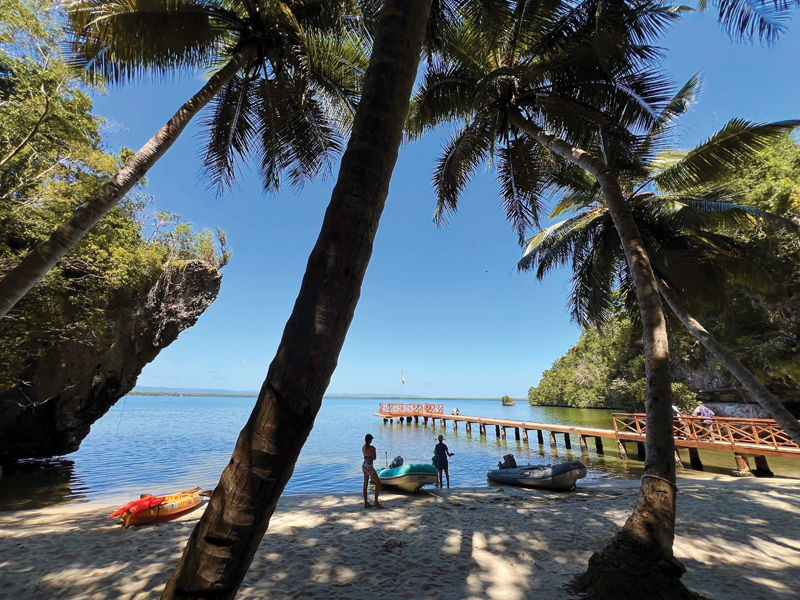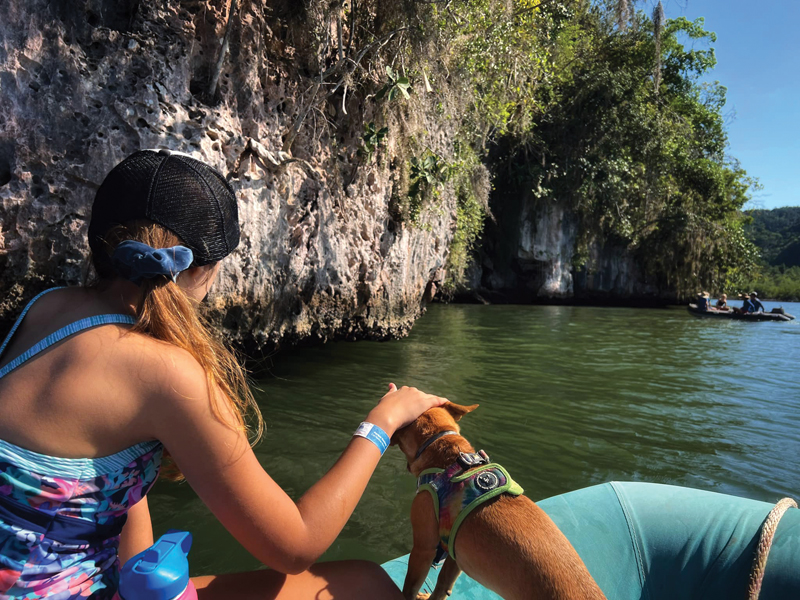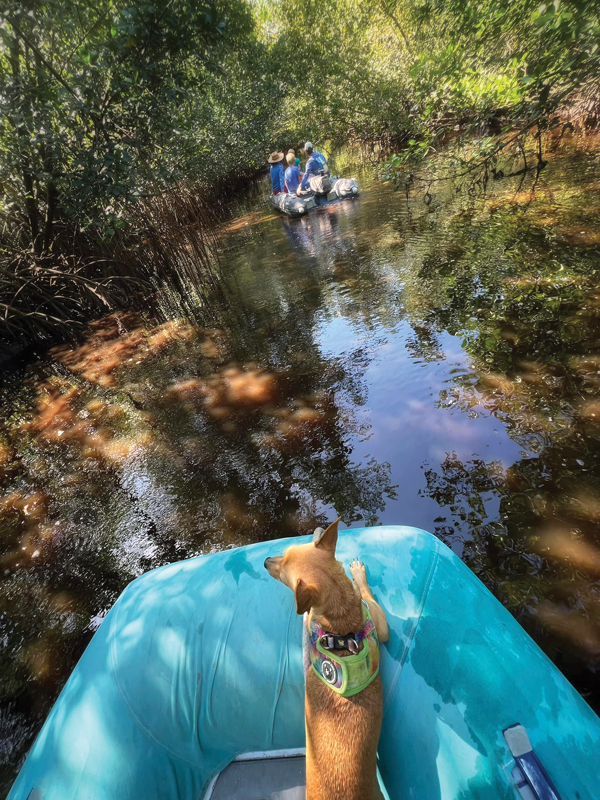Sail in and drop anchor: don't miss Los Haitises National Park
There’s something magical about a national park you can sail into and anchor in. Los Haitises National Park in a remote part of northeastern Dominican Republic is not to be missed. We were in awe of the bird life soaring around the rocky cliffs as we dropped the hook after a mellow two-hour sail from Samana.

More than 600 square miles of pristine wilderness sit on the south side of Samana Bay. The park blends right in because this is a densely verdant and wild part of Hispaniola. Sailing from north and east of the island, you need to bash to windward along the north coast of the Dominican Republic before turning into Samana Bay. Coming from the south and west, you need to cross the Mona Passage from Puerto Rico, which is known to be spicy and temperamental.
Once you sail into Samana Bay, you cannot go directly into the park waters. First, you need to check in with the Armada (and into the country, if you haven’t done that already). The Armada is either in Samana town if you’re anchored out, or at the Marina Puerto Bahia if you get a slip. They grant you a park pass, for free, with a set in- and out-time. Dominicans take their paperwork seriously, so don’t try to sneak in without a pass.
There are many anchorages to choose from, even for deep-draft boats. The more you tuck into the harbor that forms the park, the better wind protection you will have from all directions. Be aware of the noseeums at sundown on the beaches and mangrove areas; they are the worst we experienced in the entire Caribbean. Get off the beaches before dusk, and don’t anchor too close. We had to brave the swarms to walk our dogs. We still had bite marks months later.
The official park dock for tour boats is easy to spot. You can land your dinghy on the beach there and for the equivalent of US $2 you can wander around. The beach itself is small but clean and shady. There are public restrooms, and it’s never crowded. You can follow a hiking trail into the rainforest, or you can check out the caves. Unlike the US, you won’t be forced to stick to a path or be roped off from certain parts of the caves. You can explore and wander every nook for as long as you like. These closer caves are wonderful, but they’re just the beginning.

You can use the maps on the NoForeignLand app or on the park website to explore more cave systems around the area. These are dinghy accessible, but be mindful of the swell. We learned the hard way that a north swell can make getting from the dinghy into the caves a sporty endeavor.
Cueva de San Gabriel is the largest of the cave systems in the park. It’s easy to get around for all fitness levels, and while there is plenty of natural light it’s smart to keep a headlamp or flashlight with you. San Gabriel has jaw-dropping rooms that open up with well-formed stalactites and stalagmites, as well as dozens of petroglyphs and pictographs on the rock. Crystals make the walls sparkle as shafts of sun stream in through large openings in the cave ceiling. Our group of boat kids were wandering around in awe, my daughter said she felt like Indiana Jones while she was exploring.

After a couple of days of caving, we loaded into the dinghy with our friends and set out to follow the mangrove trails. First we threaded the needle between the towering rocky cliff islets that dot the park and soar to 100 feet high. The mangrove trail may have some tourist day boats on it, so keep your eyes open so that they don’t run you over. One fork leads to a dinghy dock where you can tie up and take a short walk to a small resort. There you can pay a fee for a day pass and use the pools and bar and restaurant. We opted to go the other way and meandered along the watery path until it dead ended with some fallen trees. On the way back the kids sang camp songs while we rafted up mid-way for a snack break.
There are quieter adventures at Los Haitises, too. Bird watchers will love spotting the endangered Ridgway’s Hawk, the Hispaniolan Piculet, the Hispaniolan Woodpecker, the Hispaniolan Emerald, and soaring herons, pelicans, and frigate birds. You can watch the sea turtles and manatees swim by, or if you’re lucky, spot a flamboyance of flamingos.
Back at the boat as night fell, we could hear the surf pounding on one side of us and the birds chattering on the other. We bobbed around under a soft blanket of stars, savoring the moment, knowing this was not a place we may ever come back to again, or it may not be the same. Today it is boat-access only or by a long, sporty road that requires four-wheel drive. It’s quiet, pristine, and not terribly well known. Plans are in the works for a highway to the park as well as an airport nearby. Of course, these projects are moving along on island time, so you can still set your sails for Los Haitises and experience some magic for yourself.
By Cindy Wallach
About the Author: Cindy Wallach cruised the Caribbean with her family and two dogs aboard their St. Francis 44 catamaran Majestic, which is for sale. Learn more at majesticstfrancis44forsale.com.




